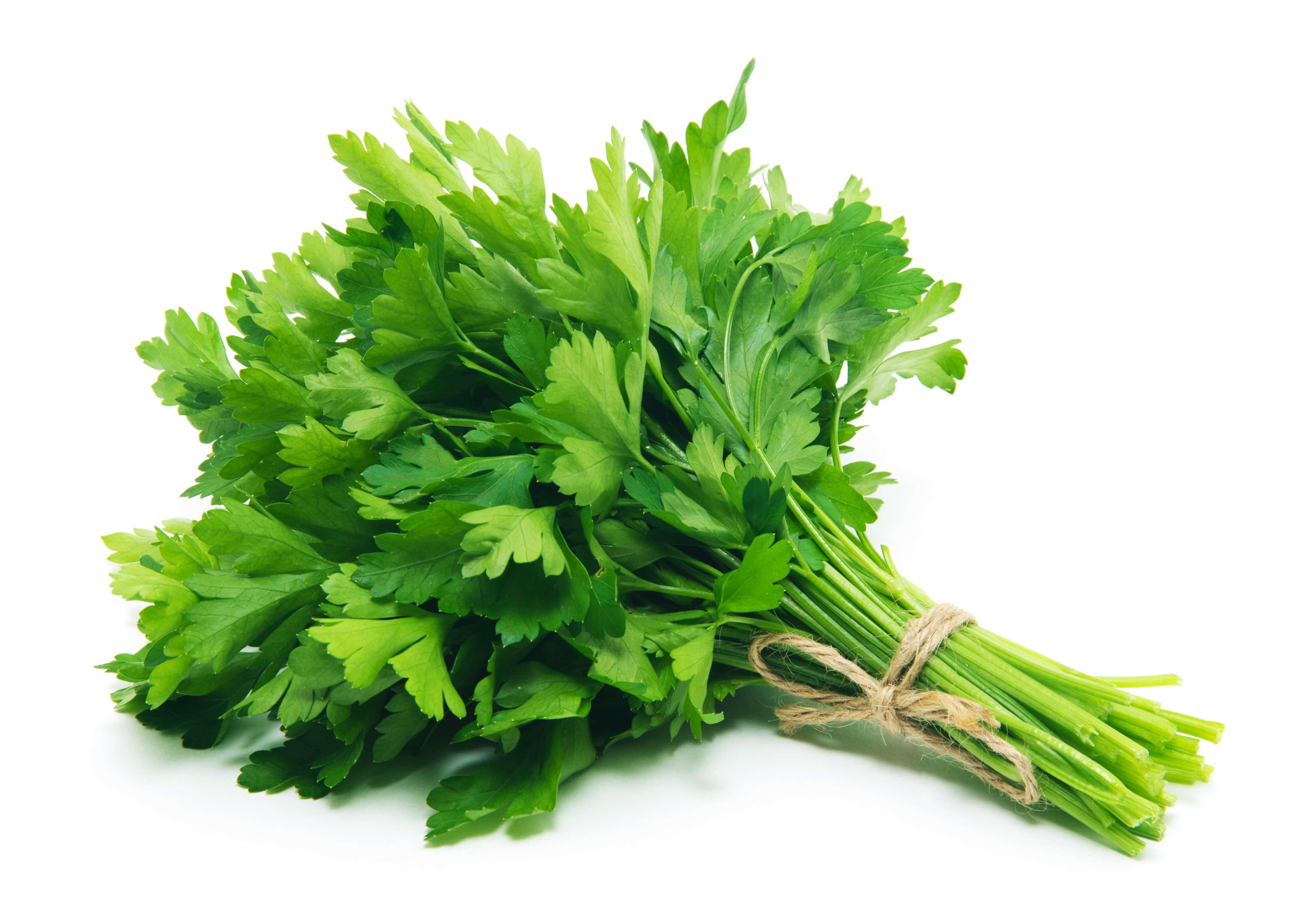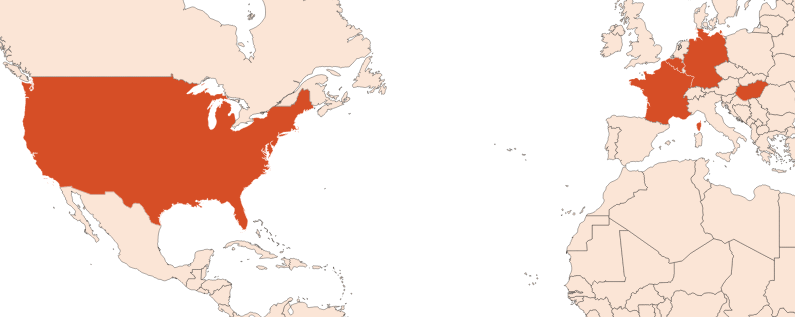Parsley Leaf EO
Naturelle
Herbal > Agrestic > Anisic > Minty > Green

Crédits photo: ScenTree SAS
Latin name :
Petroselinum crispum
Botanical profile :
Parsley is a plant belonging to the apiaceae family, as does Carrot Seed EO, Celery Seed EO and Lovage Seed EO for example. It belongs to the Petroselinum genus.
Geographic origin :
Parsley is a plant native to the asian region and is cultivated in Europe (France, Hungary, Germany, Belgium), in western Asia and in the USA.
Chemotypes :
A few varieties of parsley exist throughout the world, according to their aspect:
Petroselinum crispum var. crispum is the most well-known, cultivated in Europe (France, Hungary, Germany, Belgium), in western Asia and in the USA. Thi variety is used for cooking.
Petroselinum crispum var. neopolitanum or Italian parsley, also very much used for cooking.
Petroselinum crispum var. tuberosum from Hamburg, cultivated for its edible roots.
Eventually, another species from another genus is to be quoted, as it is close to common parsley : Cryptotaenia japonica, japanese parsley, used over all in oriental cuisine.
Petroselinum crispum var. crispum is the most well-known, cultivated in Europe (France, Hungary, Germany, Belgium), in western Asia and in the USA. Thi variety is used for cooking.
Petroselinum crispum var. neopolitanum or Italian parsley, also very much used for cooking.
Petroselinum crispum var. tuberosum from Hamburg, cultivated for its edible roots.
Eventually, another species from another genus is to be quoted, as it is close to common parsley : Cryptotaenia japonica, japanese parsley, used over all in oriental cuisine.
Extraction process :
Parsley is a rooted and leafy plant measuring up to 80 centimeters high. Its top and bottom leaves are separated into two to three parts. Its ovoid seeds are green to brownish and measure up to 2 millimeters.
Parsley is an annual plant, cultivated in Europe and western Asia. It grows up in sunny places, with high drainage if possible. Plant multiplication is done by sowing the seeds, whose germination can last 3 to 6 weeks. Sowing is usually done in spring, in a slightly acid soil, putting space between the plants.
The leaves aspect in the major plant maturity indication.
Parlsey harvesting can be done manually or mecanically, although the manual method is prefered, not to damage the plant. Stems are grouped and cut a few centimeters above the soil. Stems are attached together to be stored. Cutting is usually done between april and december, that is to say alsmost all year. The best quality of parsley is obtained for plants sown at the beggining of springtime and cultivated at the end of the season.
Leaves (Parsley Leaf EO) and seed (Parsley Seed EO) of the plant are obtained through steam extraction with a yield of about 2% for leaves and 7% for seeds. They have particular and different smell even if they have simillar components. It's also possible to find Parsley Leaf Oleoresin and Parsley Seed Oleoresin. In those case, extraction are done thanks to organic solvents.
Parsley is an annual plant, cultivated in Europe and western Asia. It grows up in sunny places, with high drainage if possible. Plant multiplication is done by sowing the seeds, whose germination can last 3 to 6 weeks. Sowing is usually done in spring, in a slightly acid soil, putting space between the plants.
The leaves aspect in the major plant maturity indication.
Parlsey harvesting can be done manually or mecanically, although the manual method is prefered, not to damage the plant. Stems are grouped and cut a few centimeters above the soil. Stems are attached together to be stored. Cutting is usually done between april and december, that is to say alsmost all year. The best quality of parsley is obtained for plants sown at the beggining of springtime and cultivated at the end of the season.
Leaves (Parsley Leaf EO) and seed (Parsley Seed EO) of the plant are obtained through steam extraction with a yield of about 2% for leaves and 7% for seeds. They have particular and different smell even if they have simillar components. It's also possible to find Parsley Leaf Oleoresin and Parsley Seed Oleoresin. In those case, extraction are done thanks to organic solvents.
Major Components :
Same components as Parsley Seed EO but with slightly differents pourcentages
- Uses in perfumery :
- Mainly used in food flavoring, Parsley Leaf EO is very rarely used in perfumes. In general, a small quantity is recommended. Allows to bring a spicy and green aromatic note to your accords. It is also useful to give strength and naturalness to colognes, to extend the green notes for example.
- Other comments :
- Latin name of parlsey comes from greek ''petros '' which refers to the rocky place where it grows up, and ''selinon '', the greek name for parsley.
In antique Greece, parsley was used for its diuretic and medicinal vertues. Each dying people was said to ''in the need of parsley ''. This is why parsley has been associated to death for decades. This plant has also been associated to evil and satan, for romans and greeks.
Catherine de Medicis and Charlemagne popularized it in France, as parlsey was growing in their garden. - Volatility :
- Head/Heart
- Appearance :
- Yellow to brown liquid
- Stability :
- Terpenes of the oil may polymerize through time, under the effect of strong oxidation.
- Price Range :
- €€€
- Aromatherapy :
Informations provided below are taken from reference works in aromatherapy. They are given for information purposes only and can not constitute medical information, nor engage the responsibility of ScenTree.
Parsley Leaf EO can be used for its anticonvulsant, anti-spasmodic and diuretic vertues and is advised in case of spasmodic and inflammatory enterocolitis and for renal issues.

Crédits photo: ScenTree SAS
- EINECS number :
- 281-677-1
- FEMA number :
- 2836
- Allergens :
- This ingredient does not contain any allergen.
- IFRA :
- This ingredient is not restricted
To learn more about IFRA's standards : https://ifrafragrance.org/safe-use/library
ScenTree is solely responsible for the information provided here.

